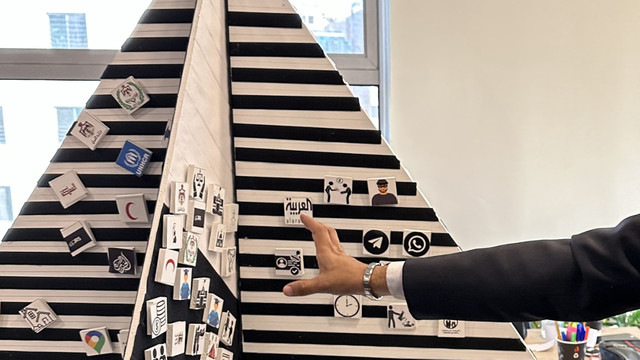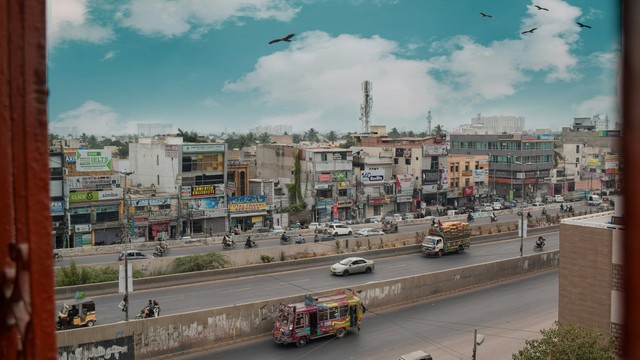Community-led COVID-19 response: an update from the Philippines
One year on, Ruby Papeleras and Migo Gaddi provide an update on the action of the Homeless People’s Federation of the Philippines in its fight against COVID-19, including case studies of what has been done in the cities of Davao and Talisay.



Street vegetable seller. Informal workers are at a higher risk of losing their livelihoods as an impact of COVID-19 (Photo: ILO/Minette Rimando via Flickr, CC BY-NC-ND 2.0)
The Philippines has been really slammed by the pandemic. Despite draconian government lockdowns in many cities, infections have mushroomed to 1.2 million cases and so far 20,900 people have died.
It has revealed enormous gaps in the country's systems of governance, economics, healthcare and technology, and left many with no support. The hardest hit by the virus, and by the effects of the prolonged lockdown, have been the urban poor.
Filling the gaps
Where top-down systems of relief have come up short, bottom-up efforts by grassroots organisations continue to fill some gaps and help people survive, as this blog on the Homeless People’s Federation of the Philippines' (HPFP) COVID-19 response described.
HPFP and its partner Philippine Action for Community-led Shelter Initiatives, Inc (PACSII) continue their work to address many urgent needs in poor communities in cities around the country.
Through its network of community-based savings groups and homeowners’ associations, the federation has tackled problems of hunger, ill-health and loss of income by:
- Surveying and mapping vulnerable families and those with livelihood problems to understand who needs what
- Setting up community kitchens to cook nutritious meals for unemployed and vulnerable community members, and provide food delivery services
- Setting up hand- and foot-washing stations throughout the communities
- Collaborating with local governments to use community-based health monitors to track infections and distribute aid and information
- Planting community vegetable gardens wherever possible within the communities and on borrowed land, and
- Launching livelihood projects to help those who have lost their jobs.
Since the lockdown prevents any travelling, Ruby Papeleras and Migo Gaddi used Zoom to find out what community leaders in two cities are doing.

Vulnerability map of Kabalaka Homeowners Association in Hoa, Philippines (Photo: copyright Homeless People’s Federation of the Philippines)
Arlene San Pedro reports from the Camus Homeowners Association in Davao…
At the beginning of the pandemic, we had many emergency meetings to discuss how to handle the situation within the community. We set up foot-washing stations and temperature checks at community entrances, and organised volunteers, on a roster, to monitor who comes in and out. Davao has had lots of cases, so it was important to be strict.
Initially, the virus itself didn't affect us too much. But when the lockdown was imposed and we were not allowed to leave the community, most of us couldn't work or earn, and many faced serious hunger. It was a shock when community members began testing positive and had to quarantine in their homes, so they too needed food.
There wasn't much help coming from the barangay (the district government), so we started our own community kitchen to share whatever food we could get hold of. We cooked nutritious, hot meals and packed them up, so they could be collected or distributed with minimal interaction.
We have good relations with a nearby health centre, where many community members work, and that has meant easier access to health care throughout the crisis. I am proud that our communities in Davao have worked together to address our needs in these difficult times.
…and from Talisay, Elizabeth Solitas and Jujie Catubigan of the Atisan Homeowners Association report back
Before any aid arrived from outside, we began making plans to help ourselves during the pandemic. We set up committees to organise the community kitchen, buy ingredients and materials, manage the finances and implement other relief programmes. We were careful to ensure full transparency of the finances at all times.
Our community savings programme worked like an anchor through all the storms of the pandemic. For many who lost jobs and ran out of money during the long lockdown, loans from the savings programme provided a vital cushion. And we were able to use money from our community's calamity fund for emergencies.
Initially we used money from our savings to disinfect the community, and later coordinated with the local government to ensure we were included in their cleaning drives.
Coordinating with the barangay was a challenge because of political struggles, but we worked well with the city government. Because the city found itself overwhelmed by the crisis, we assisted them by identifying point persons in our communities so they could focus their emergency services on those most in need of help.
Young people had a vital role too
The young people in the community couldn't go to school during lockdown, and many found it too hard to learn online. To give them something to do, the community's youth group recruited them to join an emergency response team. They played a vital role in the COVID-19 emergency response, especially as seniors and other vulnerable people had to stay at home.
The young people mapped out the most vulnerable families, and organised drives to receive, store and distribute donated food to where it was most needed. With a small grant from the federation's Cities Alliance project, they set up foot-washing stations at the community entrances and improved hand-washing facilities.
With each household contributing, they also planted community vegetable gardens to address food needs. And they printed stickers for each house showing emergency contact numbers, as well as using Facebook group chats to respond to emergencies.









